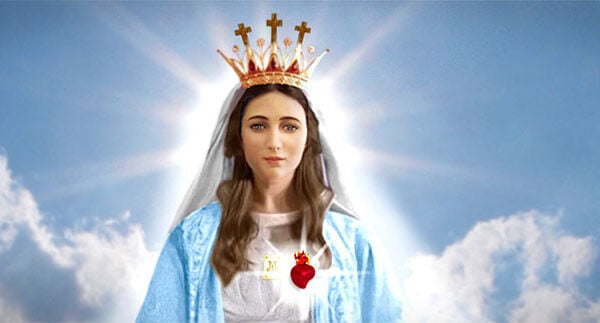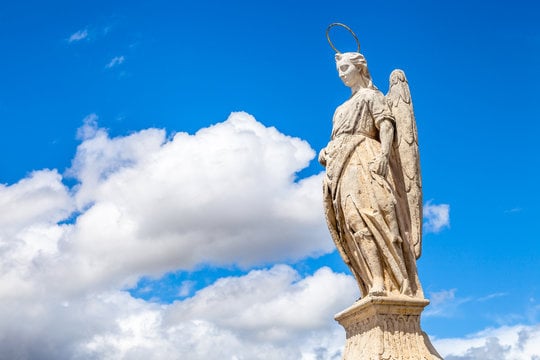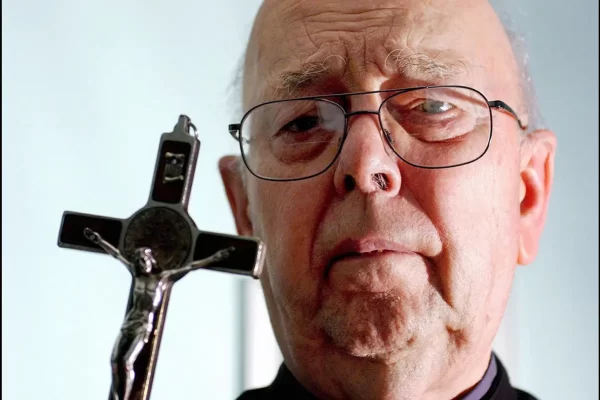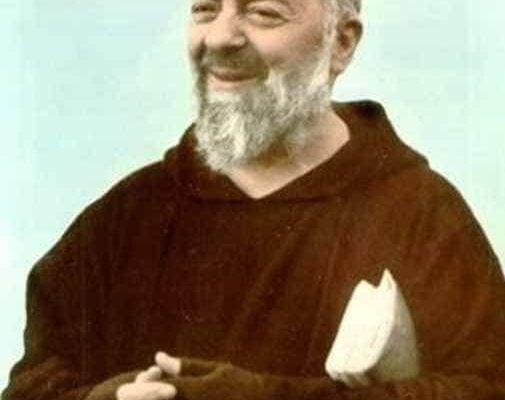
HOLY ROSARY TO THE QUEEN AND MOTHER OF THE END TIMES
(Dictated by St. Michael the Archangel to Luz de Maria, 10.17.2022) OFFERING Mother, you who see this moment of distress for your children and guard your Son’s people… Mother and teacher, take us by the hand so we do not hesitate and walk the right path with the faith necessary so as not to waiver. PRAYERThe Creed. FIRST MYSTERY St. Gabriel the Archangel tells the young virgin in Nazareth that she will be the Mother of the Savior, and she humbly responded, “Let it be done…” On the large bead: One Hail MaryOn the smaller beads: Five Our Fathers INVOCATION Queen and Mother of the End Times,fill me with humility to be the Lord’s slave. SECOND MYSTERY St. Gabriel the Archangel says to the Virgin Mary: “Do not be afraid, Mary, for you have found favor with God. You will conceive in your womb and give birth to a son, and you shall name him Jesus.” On the large bead: One Hail MaryOn the smaller beads: Five Our Fathers INVOCATION Queen and Mother of the End Times,fill me with humility to be obedient to the Divine Will. THIRD MYSTERY God, fountain of infinite grace, has filled Mary. In Mary, humanity possesses Divine Grace. On the large bead: One Hail MaryOn the smaller beads: Five Our Fathers INVOCATION Queen and Mother of the End Times,fill me with humility to know how to wait. FOURTH MYSTERY “The Holy Spirit will come upon you, and the power of the Most High will overshadow you. So the holy one to be born will be called the Son of God.” On the large bead: One Hail MaryOn the smaller beads: Five Our Fathers INVOCATION Queen and Mother of the End Times, fill me with love for God that I may help save humanity. FIFTH MYSTERY “Mary said, ‘I am the Lord’s servant; may your Word to Me be fulfilled.’ Then the angel left her.” On the large bead: One Hail MaryOn the smaller beads: Five Our Fathers INVOCATIONQueen and Mother of the End Times,Mother and teacher, teach me to be faithful to God as you were. On the final beads: One Our Father, three Hail Marys, and the Hail Holy Queen. Let us pray: Queen and Mother of the End Times, deliver us from the clutches of evil. Queen and Mother of the End Times, by your hand, may we be faithful to God. Queen and Mother of the End Times, intercede for us in the face of persecution. Queen and Mother of the End Times, may we, like you, be firm in faith. Queen and Mother of the End Times, may the Cross be my refuge as it was for you. Queen and Mother of the End Times,like you, may our refuge be in your Son. Queen and Mother of the End Times, from war, plague, earthquakes, persecutions, deliver us, Our Lady. Queen and Mother of the End Times, intercede for us so that we may recognize the evil imposter. Queen and Mother of the End Times, may you be our strength in our trials. Queen and Mother of the End Times, be our refuge in times of trouble. Queen and Mother of the End Times, snatch me away from the clutches of evil. HOLY GOD, HOLY MIGHTY ONE, HOLY IMMORTAL ONE, DELIVER US FROM EVERY EVIL. HOLY GOD, HOLY MIGHTY ONE, HOLY IMMORTAL ONE, DELIVER US FROM EVERY EVIL. HOLY GOD, HOLY MIGHTY ONE, HOLY IMMORTAL ONE, DELIVER US FROM EVERY EVIL. Ask your Divine Son to bless us in union with you. In the Name of the Father, and of the Son, and of the Holy Spirit. Amen. Novena to the Queen and Mother of the End Times








